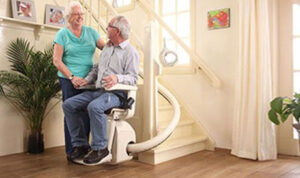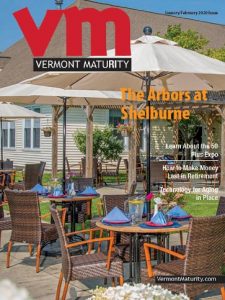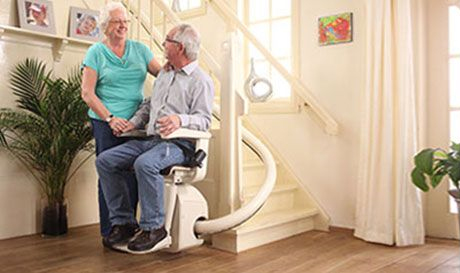
In 2008, the AARP did a survey on healthy homes. The results were somewhat disheartening: One-third of all seniors interviewed reported having limited independence in their own residences based on deterioration of strength, endurance, vision, hearing and memory. Thankfully, many of these impediments can be overcome if seniors make some simple changes to their homes.
The AARP recommends having an occupational therapist perform a home assessment to ensure a safe living environment. An occupational therapist will review the activities that are important to each individual. For gardeners, raised flower beds might allow a favorite hobby to be performed without back strain. Better lighting may be essential to someone who enjoys reading, crossword puzzles or other potentially eye-straining activity. Kristine O’Malley, an occupational therapist at Fletcher Allen Health Care, said a distinction must be made between being independent and being safe. Many seniors are pleased by their independence, but their living areas are not safe. Occupational therapists visit homes to ensure that they are both.
O’Malley said occupational therapists study a patient’s daily routine with the goal of making necessary adaptations. If there are some visual deficits which prevent someone from seeing a step or a rise, they may suggest adding colored tape to the floor. O’Malley said one of the greatest risks to seniors is falling after getting out of a bath tub. Therefore, therapists often recommend shower seats or a tub bench. O’Malley cautioned against making too many modifications. If a senior has lift chairs and lift toilet seats, they may not be using their leg muscles sufficiently and will have difficulty with regular chairs outside the home. “It’s a delicate balance,” she said.
One way to ensure homes are safe is to follow the guidelines of the Americans with Disabilities Act. This includes eliminating steps for at least one entrance, adding grab bars in the bathroom, changing the height of bathroom fixtures to allow for wheelchair users, exchanging handles for levers for those with limited hand strength, and widening doorways. Some common sense changes including limiting opportunities for tripping and falling by ensuring carpets don’t slip, extension cords don’t stretch across walking areas, and moving furniture out of the way.
Tom Moore, a builder based in Underhill is a Certified Aging in Place Specialist, one of only four in the state. Moore believes more thought should be put into planning a home to avoid costly retrofits, noting that it costs no more to put in a doorway which is wide enough for a wheelchair than it costs to install a smaller one. Moore added that seniors can be seriously injured by falling and therefore attention should be paid to transition areas to make them as clean and settled as possible. He also touted the importance of good lighting, suggesting that homes be constructed with extra fixtures so lighting can be added, as needed.
Moore said statistics show that seniors who stay in their homes rather than going to assisted living may live longer. An important component is having one’s living quarters on the first floor, but Moore noted the value of seemingly little things like light switches and door handles. Large rocker switches are easier to use than small toggle switches and lever handles are easier than doorknobs. To prevent stooping, he suggests raising the height of washers and dryers, and adding rolling cabinets which can be hidden behind doorways. Creating kitchens with peninsulas instead of islands also improves mobility and Moore recommends installing showers without lips.
Physical changes are the most obvious, but there is far more that can be done. Many paints and varnishes contain volatile organic compounds (VOCs). According to the EPA, exposure to VOCs can lead to a variety of health issues. They recommend ensuring houses have good ventilation if VOCs are present. One option is to use paints which have been given a “Green Seal.” Another major issue, particularly in old homes, is mold. According to the EPA, “molds produce allergens…, irritants, and in some cases, potentially toxic substances.”
The Agency stresses that it is impossible to get rid of all mold because spores float through the air. However, mold can be controlled by fixing the underlying issue of moisture seeping into the house.
Todd Leach of Leach Construction in Jericho noted that modern building shells are tighter than older ones and it is important that these buildings have proper ventilation, particularly with older citizens who may not be in the best health and are more susceptible to pollutants. Leach cautioned against the use of plywood made with formaldehyde-based products, and paints and varnishes with VOCs. He noted that all products, even such seemingly benign ones as plastic toys and scented candles produce “off-gases.” Heightened exposure to these gases can affect people adversely, particularly those with high sensitivity levels. Leach cited studies that the elderly tend to spend up to 90 percent of their time indoors. He said indoor air is generally of poorer quality than outdoor air because of the variety of products in a confined space. Therefore, those who spend a great deal of time indoors are more likely to have respiratory and allergic reactions. This can be exacerbated by the addition of toxic cleaning products, space heaters, wood stoves, fireplaces, animal dander, bacteria, and gas stoves. Leach recommended electric stoves over gas ones.
One simple solution offered by Leach is to make sure your house is clean. Since mold is a major issue, residents should control the humidity level of their home and, whenever possible, let in fresh air. If a carpet gets soaked from a leak or burst pipe, Leach recommends replacing it rather than trying to clean it. He also cautioned against leaving unnecessary toxins like paint or cleaning supplies in the house.
In addition to making a house physically healthy, Leach noted that one should take care of the mental health of the inhabitant, as well. Even though it may increase their bills, it is important for seniors to be warm in the winter and cool in the summer. Leach stressed that one crucial component of mental health is light. “Sitting in a dark room with the curtains drawn,” he said, “is a recipe for depression.” Leach recommended skylights and open floor plans with windows. “Natural light,” he said, “just makes you feel better.”
This article was contributed by Phyl Newbeck.
 Related Articles & Free Subscription
Related Articles & Free Subscription
Aging in Place Through Universal Design







Comment here